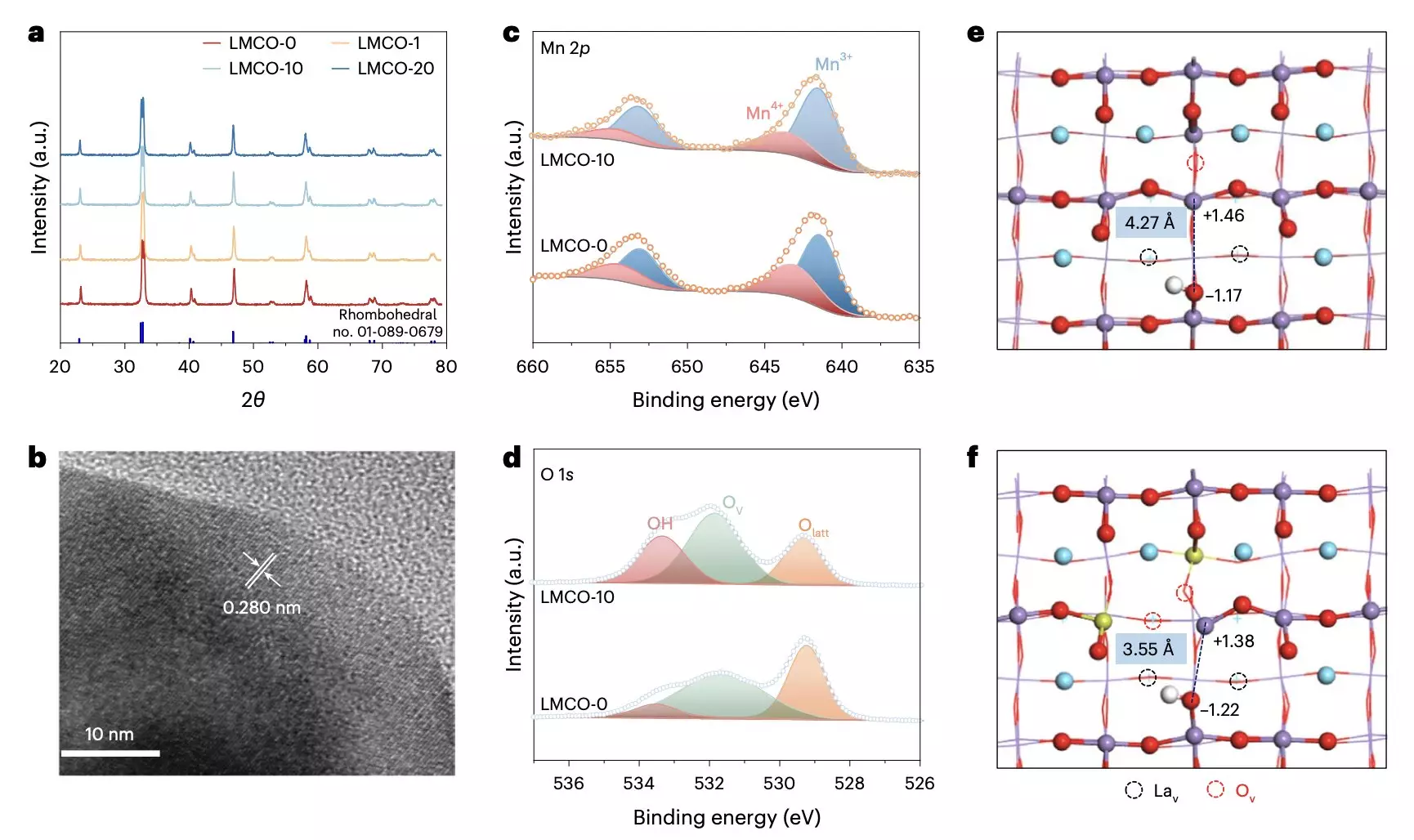Ethylene, a highly flammable compound, is used in a variety of industries ranging from manufacturing to agriculture. As the demand for this hydrocarbon continues to rise, researchers are exploring new methods to produce ethylene on a large scale. One such method involves converting ethane, a component of natural gas, into ethylene and hydrogen. While traditional methods require significant electrical power and have a high carbon footprint, recent research has introduced a more sustainable approach utilizing solar-powered photocatalysis.
Researchers from Soochow University and the University of Toronto have introduced a novel approach to produce ethylene through the photocatalytic dehydrogenation of ethane using a perovskite oxide called LaMn1−xCuxO3. This innovative photocatalyst has shown promise in converting ethane into ethylene and hydrogen under solar or LED light, reducing carbon emissions and mitigating greenhouse gas emissions. The unique properties of the perovskite oxide, including redox-active Lewis acid and base sites, optimize the activity, selectivity, and yield of the ethane dehydrogenation process.
The researchers demonstrated the effectiveness of their solar-powered ethylene production approach using a rooftop prototype device, achieving remarkable ethylene production rates. Furthermore, comprehensive technical and economic analyses highlighted the economic potential of this sustainable solution. With ethylene production rates reaching 1.1 mmol g−1 h−1 and ethane conversion rates of 4.9%, the researchers showcased the viability of an industrial-scale solar ethylene production process. This innovative approach has the potential to revolutionize the future of ethylene production, offering a more sustainable alternative to traditional fossil-powered methods.
Future Directions
To optimize the efficiency of the ethane conversion process, careful engineering of the photocatalyst and photoreactor is essential. Ongoing research indicates promising results, suggesting that the LaMn1−xCuxO3 perovskite oxide photocatalyst could play a crucial role in large-scale ethylene production. In their upcoming studies, the researchers plan to further investigate the performance of their photocatalyst and photoreactor, focusing on enhancing catalytic reactions. Additionally, they aim to improve photochemical activation, light capture, and light transport rates to maximize the photocatalytic efficiency of the perovskite oxide.
The development of a sustainable approach to ethylene production using solar-powered photocatalysis represents a significant advancement in the field. By harnessing the potential of perovskite oxide photocatalysts, researchers are paving the way for a greener and more efficient method of ethylene production. With further research and innovation, this technology could revolutionize the industry, offering a more sustainable and environmentally friendly alternative to traditional production methods.


Leave a Reply